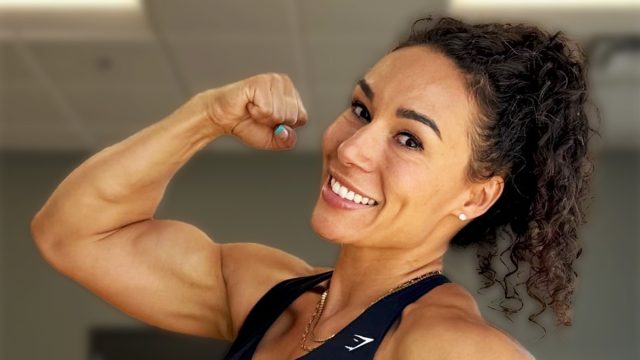She Could Have Lost Weight Faster If She Had Known These 5 Fat Loss Tricks
Are you trying to lose body weight fast? There are a few easy ways to accelerate the process, according to one expert. Ashley DiGiacomo Schwartz (@the.busy.mom.method)is a fitness and nutrition influencer and Fitness & Nutrition Body Recomposition Coach-BA/IMBA, who transformed her body during perimenopause and helps other women do the same. In a new social media post, she reveals key things that will help you lose body weight faster. "Too many people overcomplicate fat loss! It doesn't have to be complicated! It just needs to be consistent. Be patient and do these five things," she writes in the post.
1. Eat More Protein
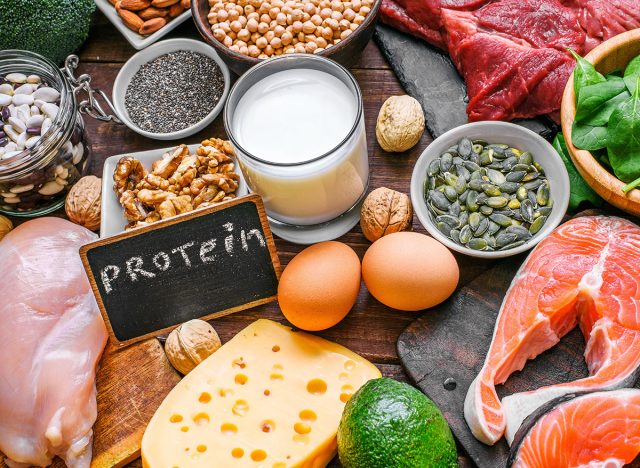
Her first suggestion is to amp up your protein intake. "More protein will lead to less hunger. Also, eating enough protein will help minimize muscle loss during your weight loss efforts. The goal should be to lose fat, not just to lose weight for the sake of losing weight. Losing muscle is not good. More muscle means your metabolism will function better and help you get that toned look (don't forget you need to strength train as well)," she says in her post.
2. Increase Your Step Count
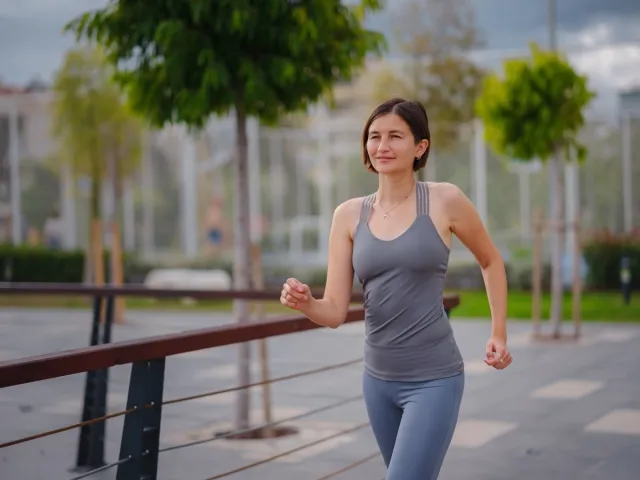
Next, walk more. "If your weight loss goals are moving slowly, you might lack enough movement in your day. Walking an extra 7,000-10,000 steps a day can help you burn an extra 300-400 calories a day, which will help your fat loss happen more quickly," she explains.
3. Get More Sleep

If you aren't getting enough sleep, your weight loss goals may be impeded. "More sleep leads to less hunger; if you stay up past your normal sleep window, you are more likely to get hungry and overeat, and late-night overeating leads to poor decisions as far as food choices go. Also, if you get substantial sleep, you will digest better, and you will wake up with better energy to work, and muscle grows at rest!" she writes.
4. Follow the 80/20 Rule
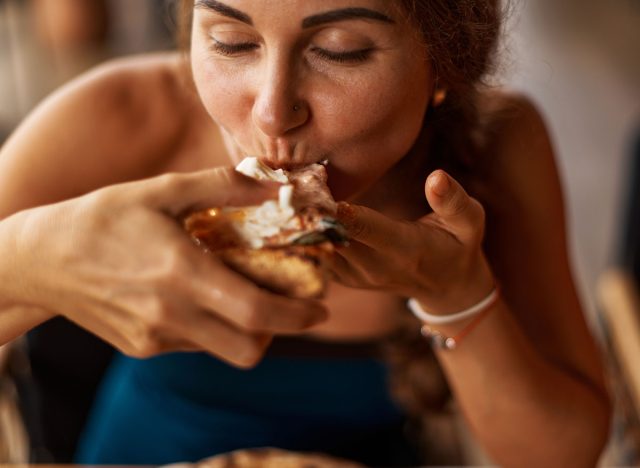
You don't have to be super strict all of the time when it comes to diet. She recommends following the 80/20 rule. "Don't be so restricted in your plan that you can't enjoy your life. That is the surest way to fail at your goals. You want a balanced and sustainable program that is realistic to stick to year-round. The approach shouldn't be a crash diet or a quick fix. It should be a long-term commitment," she says.
RELATED: This Plan Is How to Lose 5 Percent Body Fat In 2 Weeks
5. Manage Your Stress

Stress management is an often overlooked component of weight loss. "High stress leads to high cortisol. High cortisol leads to a greater struggle to lose weight. Find ways to minimize your stress, meditate, walk, pray, journal, do yoga, and listen to music. Lower your stress, and your weight loss will happen faster," she concludes.
Protein Packed Breakfast for Weight Loss: Egg White Veggie Scramble with Turkey Bacon

In another recent social media post, she revealed the meals she fueled up with at the start of the day to burn body fat. "Here are five high-protein, low-calorie breakfast ideas, each providing around 30 grams of protein.
- 1 cup egg whites
- 2 slices of turkey bacon
- 1/2 cup chopped bell peppers
- 1/2 cup spinach
- 1/4 cup diced onions
- 1 tbsp salsa (optional)
Protein: 30g – Calories: ~230.
Greek Yogurt Protein Bowl
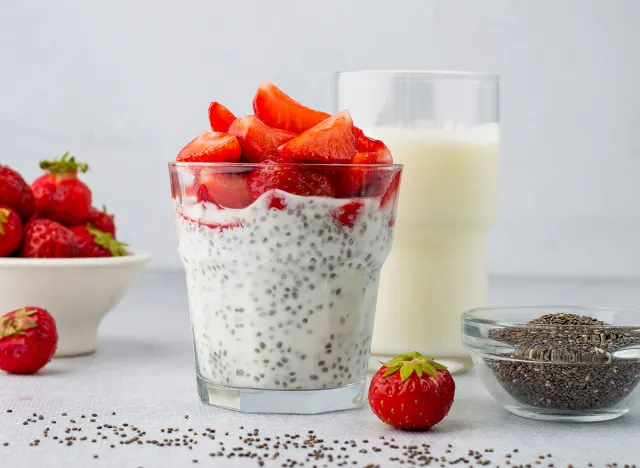
- 1 cup non-fat Greek yogurt
- 1 scoop vanilla protein powder
- 1/4 cup mixed berries
- 1 tbsp chia seeds
- 1 tsp honey.
Protein: 32g – Calories: ~270.
High-Protein Oatmeal
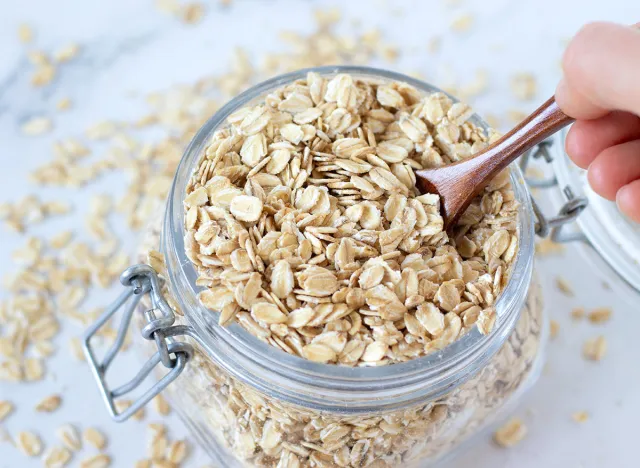
- 1/2 cup oats
- 1 scoop protein powder
- 1 tbsp peanut butter powder
- 1/2 cup almond milk
- 1/4 cup blueberries.
Protein: 30g – Calories: ~320.
Protein Smoothie
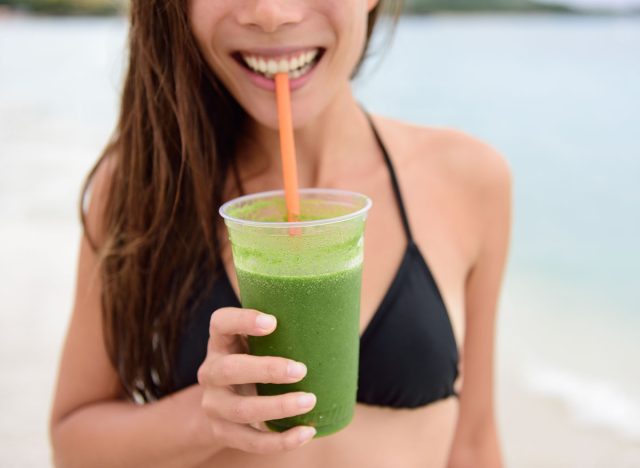
- 1 scoop protein powder
- 1/2 cup unsweetened almond milk
- 1/2 frozen banana
- 1 tbsp almond butter
- 1/4 cup spinach
- Ice cubes.
Protein: 30g – Calories: ~270.
Mon
RELATED: 10 Natural Weight Loss Steps This Trainer Uses Instead of Ozempic
Cottage Cheese and Turkey Sausage Breakfast Bowl
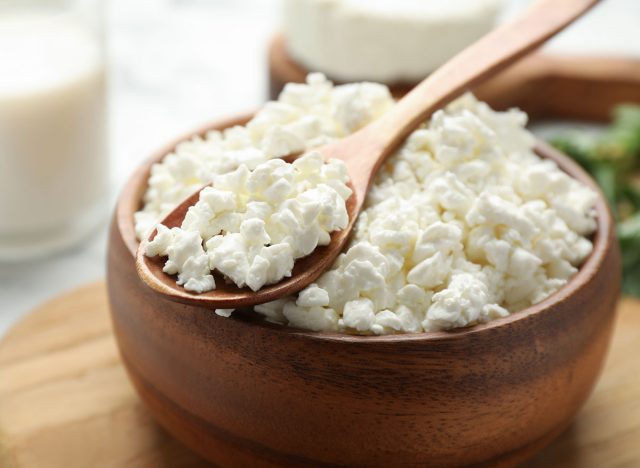
- 1/2 cup low-fat cottage cheese (112g)
- 2 turkey sausage links
- 1/2 cup cherry tomatoes
- 1/2 cup chopped bell peppers
- 1/2 avocado
- Salt, pepper, hot sauce to taste.
Protein: 30g – Calories: ~330 (with avocado). And if you enjoyed this article, take advantage of these 15 Quick Ways to Lose Body Fat Percentage in a Week.
